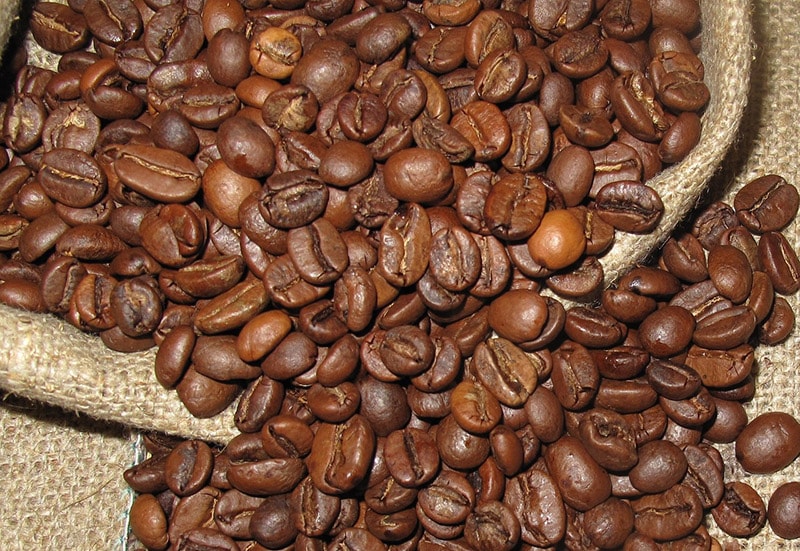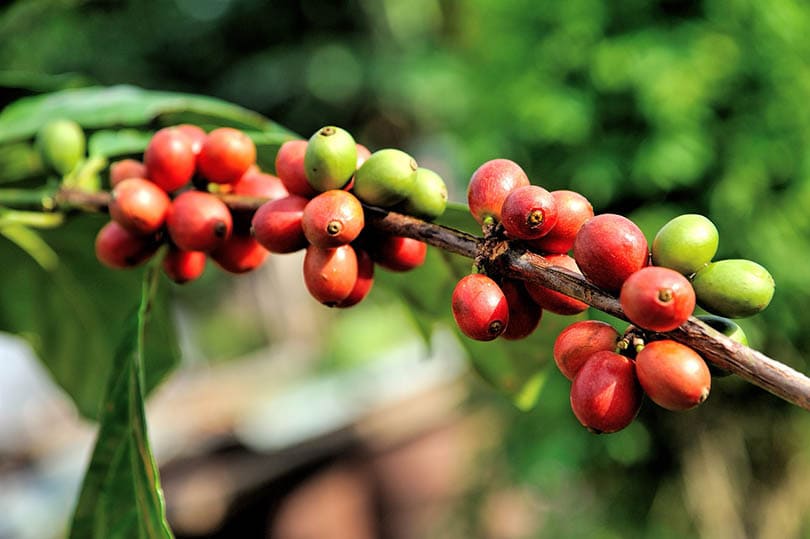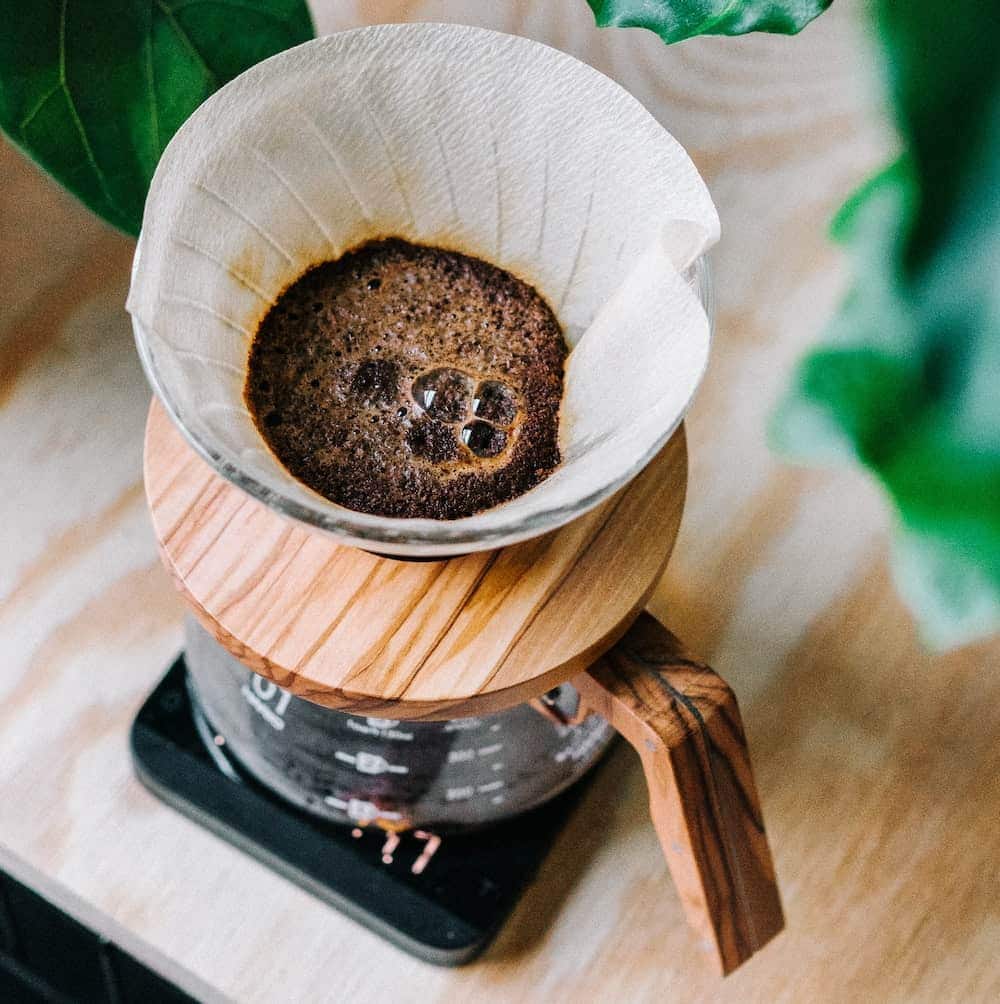
You may have heard the name Arabica if you are interested in coffee. You have probably seen it in coffee magazines, coffee bags, and coffee shops or heard it from the barista while waiting for your coffee. Your growing interest in coffee may have piqued your interest in the different kinds available, and Arabica is just a start, but it’s a good one.
To help you learn everything you need to know about this popular coffee bean, we have covered it thoroughly in this article. It would be fitting to brew a cup of coffee, kick up your feet, and read on to learn about Arabica coffee beans.

Arabica Coffee Beans Quick Reference Guide
| Origin | Ethiopia |
| Varieties | Typica, Bourbon, Caturra, Gesha |
| Taste | Sweet and smooth, subtle and complex flavor. Flavor notes of citrus, floral, spicy, and chocolate. |
| Caffeine content | 34.1 to 38.5 grams |
| Advantages | Reduces cavities, kills bacteria, prevents heart arrhythmias, helps prevent certain cancers, includes several varieties, and is self-pollinating |
| Disadvantages | Contains unhealthy compounds, longer maturing time, small yields, prone to pests and disease, and more expensive |
What is Arabica Coffee?
Arabica coffee beans get their name from the plant that produces them, the Coffea arabica. The Arabica coffee plant grows naturally in Ethiopia and is one of many plants that are part of the collective term “the coffee plant.” It got its name after crossing the Red Sea from Ethiopia to present-day Yemen and lower Arabia. They then began roasting and brewing it, exporting it throughout the Arab world and then to Europe. The name “Arabica” then only refers to where the coffee was purchased by Europeans, not where it was grown.
Arabica is the most widely grown and dominant bean used today, accounting for approximately 60% of total coffee production. Most gourmet coffees are made from mild varieties of Arabica.
Arabica beans are full-flavored and sweet and usually produce the world’s most-awarded coffee.

What Are the Different Varieties of Arabica?
Typica and Bourbon are the two most common Arabica coffee varieties worldwide. Most other well-known coffee varieties are either natural mutations or deliberate hybrids of one or both.
These two varieties were the first coffee plants brought to Yemen from Ethiopia for commercial cultivation.
Typica
The Typica coffee bean is known for its clean, sweet flavor profile and is considered one of Arabica’s most important varieties. It is commonly used with other varieties of Arabica as a “parent bean” and cross-bred to create specific flavors.
Bourbon
Bourbon is one of the first varieties to exist and is also an essential variety of Arabica. Bourbon beans are regarded as some of the best in the world for specialty coffees, producing a dark, creamy chocolate flavor that is sweet and includes very light fruity overtones.
Caturra
Caturra is a natural hybrid of the Bourbon variety. It offers a slight citrus overtone, and because of its balance of sweetness and acidity, it is versatile when it comes to roasting.
Gesha
Gesha is known for its exceptional aroma and flavor. As a result, this coffee is highly sought after but comes at a high price.

Where is Arabica Coffee Grown?
The best Arabica beans require a lot of care and attention. They are best grown slowly in areas of high elevation that experience a lot of rainfall and thrive with minimal temperature changes from day to night. They also necessitate a particular soil rich in minerals that drains well. These factors combine to slow the ripening of the beans, resulting in more flavor development.
In some countries, Arabica plants are grown on the slopes of volcanoes because they provide the required elevation, and volcanic ash provides a mineral-rich environment for the plants to thrive. The top Arabica coffee-growing countries are Ethiopia, Brazil, Peru, Colombia, and Honduras because they share many factors for optimal growth.
Arabica takes about 7 years to mature fully. About 2 years after it is planted, it produces tiny white flowers with a sweet fragrance similar to Jasmine. When the plant is pruned, berries will begin to appear. They start as a dark green color, and as they begin to ripen, they will turn yellow to light red, and finally, when they are fully ripe, they will reach a dark, glossy red color. Each cherry contains two beans, which are ready for picking.
How Does Arabica Coffee Taste?
Arabica coffee is sometimes considered superior because it tastes sweeter and smoother than other coffee beans. It has a more subtle and complex flavor than others which is suited to coffee connoisseurs and roasters seeking unique flavor notes. Arabica coffee beans have a wide range of flavor profiles. These flavors can include floral, citrus, spicy, and chocolatey, with varying acidities.
The bean variety, growing conditions, processing method, and roast level influence the flavors. Roast Arabica coffee holds the flavors of its origins. For example, Indonesian coffees are earthy and deep, and Ethiopian coffees are known for their floral, fruity, and citrus flavors.
Dry processing of coffee beans improves the naturally sweet flavor, with a slightly fermented taste, while washed processing will produce a cleaner flavor. Wet-hulling coffee processing produces earthy-flavored coffees with low acidity.
Lighter roast coffees are more intricate and acidic, while darker roast coffees are low in acidity with a sweet but bitter taste.

Advantages of Drinking Arabica Coffee
The Arabica coffee bean can be beneficial for humans. This coffee can help reduce cavities, kill bacteria, and prevent heart arrhythmias. Some coffee drinkers were found less likely to develop certain types of cancer. Coffee has high antioxidant levels, which could contribute to this phenomenon. While further research is still needed, the benefits seem to outweigh the cons.
Other advantages of Arabica coffee beans are that they generally have a more complex flavor, are usually sweeter, have a greater number of varieties, and are self-pollinating plants.
Disadvantages of Drinking Arabica Coffee
The two compounds of concern in Arabica coffee beans are kahweol and cafestol. Arabica also has a higher concentration of these compounds than Robusta. Both are diterpene compounds linked to health problems. Cafestol has been found to raise bad cholesterol, and Kahweol appears to boost liver enzymes. Preparing coffee using a filter can remove many of these compounds, making your coffee safe to consume.
Coffee, in general, is linked to causing headaches, high blood pressure, and stomach ulcers.
Other disadvantages of Arabica coffee beans are that they have a longer maturing time, are low yielding, are generally more expensive, and are prone to disease and pests.


Frequently Asked Questions (FAQs)
How Is Arabica Coffee Different from Regular Coffee?
The short answer is that Arabica coffee is often regular coffee! This is the most common coffee bean grown around the world. Arabica beans are known to be more flavorful with a sweeter and smoother taste. They have flavor notes of chocolate with hints of fruit and citrus.
Which Roast Is Best for Arabica Coffee?
A medium roast is usually preferred among arabica coffee lovers. A medium roast is the best of both worlds, balancing the sharp and acidic flavors. The caramelization process begins with a medium roast, but the coffee doesn’t reach the bitter and smoky taste of a dark roast.
How Much Caffeine Is in Arabica Coffee?
Arabica coffee contains less caffeine than Robusta coffee. Arabica contains 34.1 to 38.5 grams of caffeine content, whereas Robusta contains 68.6 to 81.6 grams. For any coffee, the amount of caffeine depends on the serving size and brewing method.

Conclusion
Arabica coffee beans are one of the most popular, and coffee enthusiasts love them. They are one of the dominant beans grown today. There are a few varieties, and Arabica contains less caffeine than Robusta. They are sweeter and full of flavor and offer plenty of different flavor profiles. Since Arabica is regarded as superior to other beans, it makes a fine cup of coffee.
- https://hermanoscoffeeroasters.com/blogs/blog/arabica-coffee-beans-why-the-world-loves-coffee-arabica
- https://www.homegrounds.co/what-is-arabica-coffee/
- https://www.thoughtco.com/what-is-arabica-coffee-2353016
- https://www.aplustopper.com/coffee-advantages-and-disadvantages/
- https://www.littlecoffeeplace.com/arabica-coffee-beans
Featured Image Credit: Breaking The Walls, Shutterstock
Table of Contents













